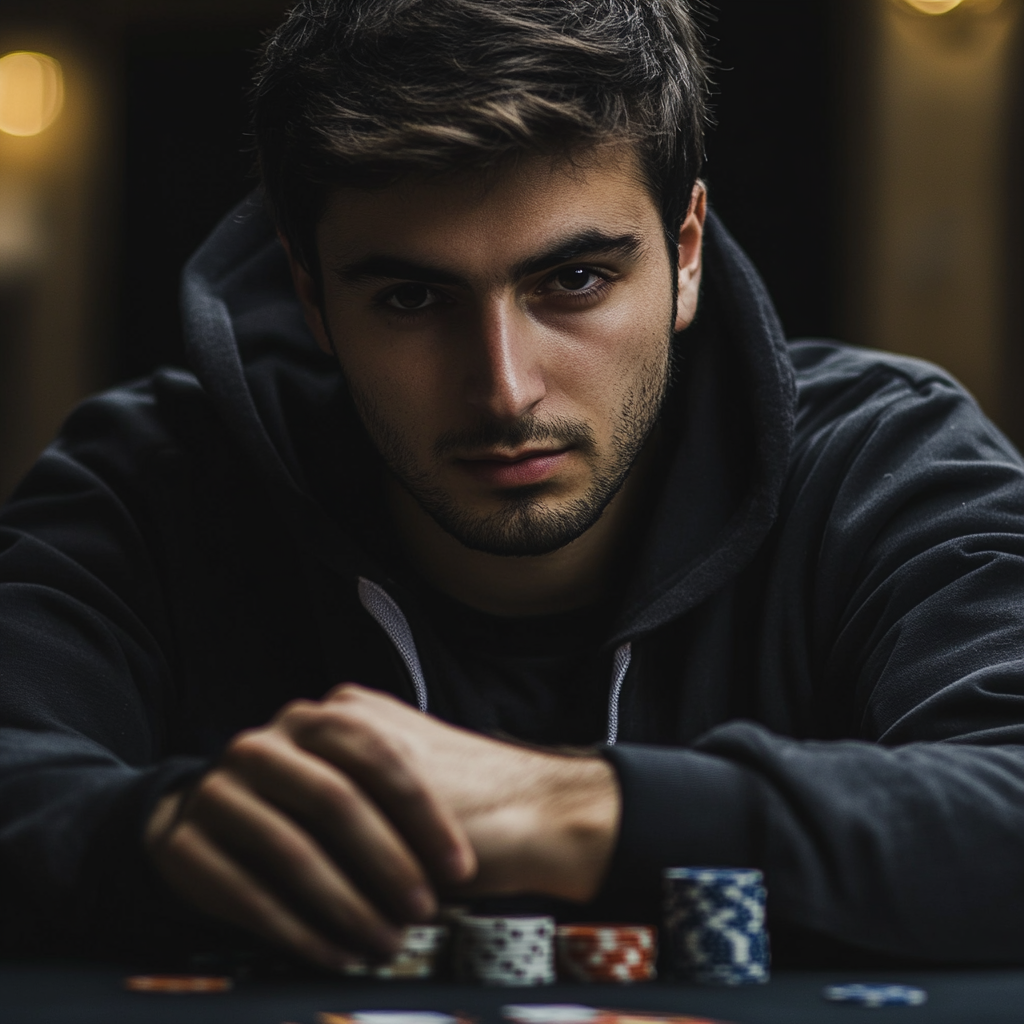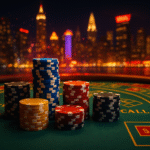
Bluffing is one of the most thrilling and intricate aspects of poker. A well-executed bluff can turn the tides against stronger opponents, leaving them second-guessing their every move. But what if bluffing didn’t rely solely on instinct or experience? What if science, specifically neuroscience, could help you master the art of deception at the poker table? This blog delves deep into the fascinating overlap between neuroscience and poker, unveiling how understanding brain activity and behavior can make your bluffs more effective.
Why Bluffing is Critical in Poker
At its core, bluffing is a psychological game. It’s about convincing your opponents that you have a hand different from your actual cards—whether that means portraying strength or hiding your weakness. Knowing when to bluff, how much to bet, and how to deliver nonverbal cues all play a role in the success of your strategy. Yet, bluffing is also risky. A poorly timed or poorly executed bluff can lead to disastrous losses.
The rise of neuroscience—the study of how the brain and nervous system work—offers insights into the mechanics of decision-making, emotional regulation, and facial recognition. These are all key components for crafting masterful bluffs and, equally important, detecting deception in others.
The Neuroscience of Bluffing: Key Brain Factors
To understand how neuroscience impacts bluffing, we need to look at a few key brain functions related to decision-making and behavioral cues:
1. Amygdala and Emotional Regulation
The amygdala, an almond-shaped structure in the brain, processes emotions like fear and excitement. It becomes highly active when you’re nervous or lying, which means poor control over your emotions might give away your bluff. However, players who practice controlling their emotional responses can “quiet” their amygdala, avoiding the subtle tells that opponents might exploit.
2. Prefrontal Cortex and Strategic Thinking
The prefrontal cortex is responsible for complex decision-making and impulse control. Bluffing requires a strategic approach—it’s not just a gamble. A strong prefrontal cortex allows players to calculate risks, estimate the reactions of opponents, and deliver consistent performances.
3. Mirror Neurons and Detecting Opponents’ Reactions
Mirror neurons in the brain help us understand and mimic the emotions or intentions of others. These neurons can enhance your ability to detect when an opponent is uncomfortable or overconfident. Recognizing microexpressions or minor changes in body language can make it easier to decide when to bluff or fold.
Neuroscience-Backed Techniques to Improve Your Bluffing
By leveraging findings from neuroscience, you can develop practical techniques that heighten your bluffing prowess at the poker table. Below are actionable methods rooted in science:
1. Strengthen Your Emotional Control
Managing your emotional responses is crucial to avoiding accidental tells during a bluff. Research suggests that practicing mindfulness meditation can reduce emotional reactivity and help players remain calm under pressure. Breathing exercises and visualization techniques before a game can also prepare your body to remain neutral during high-stakes moments.
Pro Tip: Practice poker in scenarios intentionally designed to stress you out, such as playing against aggressive opponents. The more exposure you have to pressure, the better your amygdala learns to resist overactivation.
2. Train Your “Poker Face” Muscles
Facial expressions are one of the first things opponents observe to pick apart your strategies. Neuroscientific research indicates that humans often make microexpressions—tiny, involuntary facial movements—when they experience emotions like anxiety. These can tip off others that you’re bluffing.
To counter this, focus on training your facial muscles and practicing a neutral expression in response to visual or auditory stimuli. Professional actors often practice “facial masking,” a method that involves controlling small facial muscles to avoid showing emotion. Applying these techniques can give you a solid poker face.
Practical Exercise: Stand in front of a mirror and simulate a high-stakes poker situation. Focus on keeping your face neutral while observing your own microexpressions.
3. Learn to Spot Others’ Unconscious Behaviors
The ability to detect opponents’ nervousness or apprehension is vital to counter-bluffing. A study from Harvard’s Social Cognitive Science department shows that people unconsciously reveal incredible amounts of information in their body language, including hand movement, posture, and pupil dilation.
How to Apply It: Observe your opponents closely after making a sizable bluff. Signs like fidgeting, rapid blinking, or avoiding eye contact could indicate a weak hand—or that they suspect your bluff. Conversely, a sudden stillness may signal their confidence, warning you to reconsider escalating your bluff.
4. Micro-Repositioning for Consistency
One common bluffing mistake is adjusting your behavior in response to tension. For instance, nervous players often shift in their seats, overhandle their chips, or stare at their cards longer than necessary. These actions are processed unconsciously by your opponents’ mirror neurons and can expose your intentions.
A neuroscientific approach involves “micro-repositioning”: making small, deliberate movements throughout the game to appear consistent regardless of your hand’s strength. For example:
- Tap your fingers subtly at a consistent rhythm during every hand.
- Reposition your chips at similar timing intervals.
- Maintain a fixed breathing pattern.
When to Bluff: The Mind’s Decision-Making System
One of the most impactful revelations from neuroscience studies is the dual-system theory of decision-making:
- System 1 is fast, intuitive, and emotional.
- System 2 is slower, logical, and deliberate.
Players driven by System 1 might instinctively call a bluff without analyzing odds, while those engaging System 2 carefully weigh probabilities before responding. The trick lies in recognizing which system your opponents rely on in critical moments. For instance:
- Against System 1 players, use aggressive and confident bluffs to overwhelm their gut reactions.
- Against System 2 players, make subtle bluffs backed by plausible scenarios to exploit their overthinking tendencies.
Neuroscience and Poker: Applied Bluff Frequency
Another critical factor is how often to bluff. Neuroscientists at MIT studied human decision-making in games and found that unpredictable patterns are harder for opponents to decode. They recommend bluffing in approximately 20-30% of hands, depending on the table dynamics. However, mixing up subtle and overt bluffs keeps your playstyle diverse and prevents predictability.
How to Implement It: Use a heuristic approach to divide your bluffs between:
- Small Pot Bluffs – Low-risk situations to test the waters.
- High Stakes Bluffs – Rare but bold moves with comprehensive calculations.
The Ethical Side of Bluffing
Finally, understanding the neuroscience of bluffing also involves its ethical dimensions. Manipulating opponents’ emotions requires empathy and restraint. While bluffing is an accepted part of poker, balance is essential to maintain your integrity and avoid animosity.
Ethical players often use “non-predatory bluffing”—where deception is part of a fair game rather than deliberate targeting. Neuroscience teaches us that empathy (via mirror neurons) can be used to build rapport beyond the poker table.
Final Takeaway
Incorporating neuroscience into your poker strategy can enhance your gameplay in ways you might never have imagined. Controlled emotions, sharp detection of others’ tells, consistency in behavior, and well-timed bluffs can turn an average player into a truly formidable opponent. As poker grows increasingly competitive, staying ahead means leveraging every tool available—including science.
The next time you’re at the table, remember that bluffing isn’t just about fooling others; it’s about mastering yourself. With neuroscience as your guide, you can elevate your poker game and walk away a winner.
Whether you’re planning your first international poker adventure or seeking to optimize your established circuit, Let’s Go Poker’s experienced team ensures every aspect of your journey exceeds expectations.
Visit www.LetsGoPoker.com today to begin your global poker journey and discover how the world opens up when you view it through the lens of poker.




























